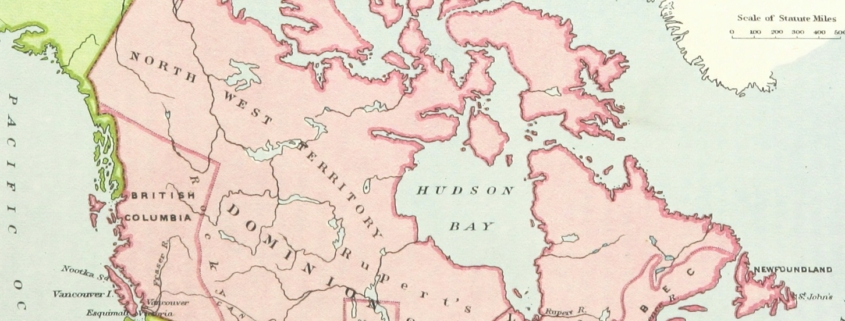Provincial and Territorial Cultural Indicators 2022
At the beginning of June, The Daily, the media outlet for Statistics Canada, released its annual report for Provincial and Territorial Cultural indicators for 2022. This is similar to their quarterly report on national culture and sport indicators but summarizes the changes in GDP contribution and jobs in the culture & sport sectors for 2022. As The Daily reports on both culture & sport as a single unit, the SAA has prepared this summary to review the arts & culture information in more detail.
Canada continued to recover from the COVID-19 pandemic in 2022, with the GDP of culture and sport increasing across the country. The GDP in both rose to $65.2 billion, an increase of 8.6% from 2021.
The Daily notes here that this was slower growth than seen in the overall economy, which saw an 11.8% growth between 2021 and 2022. Breaking out culture and sport individually, sport saw growth closer to the rate of the general economy (11.3%), while arts and culture saw only an increase of 8.2%. This slower growth rate pushed the contribution of arts and culture to the overall GDP to only 2.2%, down from 2.3%.
Nevertheless, the increase has surpassed pre-pandemic levels: arts & culture on its own contributed $55 million in GDP in 2019, falling to $50 million in 2020, seeing a rise to $54 million in 2021 and finally reaching a high of $58 million in 2022.
The largest contributor to arts and culture’s GDP growth was Visual and Applied Arts, which saw an increase of 12% and contributed $1.4 billion.
In Saskatchewan, arts & culture saw an even slower rate of growth for arts & culture, with the GDP contribution increasing from $947 million in 2021 to $990 million in 2022, an increase of only 4.6%, just over half of the increase seen in arts & culture at the national level. Saskatchewan’s arts & culture sector had the lowest contribution to the overall economy at 0.9%, with Ontario’s arts & culture sector having the highest at 2.7%.
Arts and culture in the province still followed the national trend of surpassing pre-pandemic levels: The contribution of arts and culture to the GDP was $954 million in 2019 and down to $880 million in 2020. The 2022 GDP of $990 million is a 3.8% increase from 2019 and 12.5% from the pandemic.
Festivals & Celebrations and Performing Arts saw the greatest increase in GDP between 2021 and 2022: Festivals & Celebrations saw an increase of 27%, and Performing Arts saw an increase of 20%. These increases indicate that these sectors are recovering from the pandemic. However, all of them have yet to surpass their pre-pandemic GDP contributions: Festivals & Celebrations are 36% below pre-pandemic levels, while Performing Arts is 29% below pre-pandemic levels.
Across the country, arts and culture jobs increased by 7.8%, comprising 3.3% of all jobs in Canada. The biggest gains were seen in the Visual & Applied Arts (9.2%) and the Live Performance sectors (18.6%). With 648,000 arts and culture jobs across Canada, the sector hasn’t reached pre-pandemic employment levels, as 655k were employed in arts and culture in 2019.
In Saskatchewan, there was an overall 4.7% increase in jobs across arts & culture, although there are still 1.6% fewer jobs than there were pre-pandemic.
Live Performance, split into Festivals & Celebrations (17%) and Performing Arts (16%), saw substantial increases in jobs between 2021 and 2022. However, both are still considerably below where they were pre-pandemic, showing 18% fewer jobs than in 2019.
Film & Video saw a 30% increase in jobs between 2021 and 2022, putting them at the same level that they were at in 2019. Along with Art Reproduction, they are the only sector with the same number of jobs as in 2019.
Other sectors have seen growth from their pre-pandemic numbers: Visual & Applied Arts (1.2%;) Photography (2.3%); Education & Training (2.5%;) Design (4.1%;) Architecture (4.6%;) Advertising (6.3%;) Governance, Funding & Professional Support (12.9%;) Interactive Media (25.6%;) and Multi-Domain arts & culture (34.5%).
Written & Published Works as a broad category is declining: there were 7% fewer jobs in Written & Published Works in 2022 than in 2021 and 19% fewer jobs compared to 2019. The GDP contribution of Written & Published Works was 4.3% less in 2022 than in 2021 and 14.7% less than in 2019. All of the sub-domains (Books, Periodicals, Newspapers, Other Published Works, Collected Information) except for Multi Sub-Domain saw decreases in both jobs and GDP from 2021 to 2022 and significantly from 2019 to 2022 (e.g. Newspapers saw a 4.8% decrease in GDP in 2022, but a 38.9% decrease from 2019.)
This is interesting and worth noting, as while other sectors—such as Festivals and celebrations and Performing Arts—that were hit harder by the pandemic appear to be recovering, print media does not appear to be seeing the same recovery. This is undoubtedly not solely caused by the pandemic as we move to an increasingly digital society; the impacts are still evident.
Overall, arts and culture, both nationally and provincially, are recovering from the pandemic, albeit at a slower rate than the economy as a whole. While many sectors have equalized or surpassed their pre-pandemic numbers, many are still well below, demonstrating a continued need for advocacy efforts and support for the sector from the government and the public as a whole.


